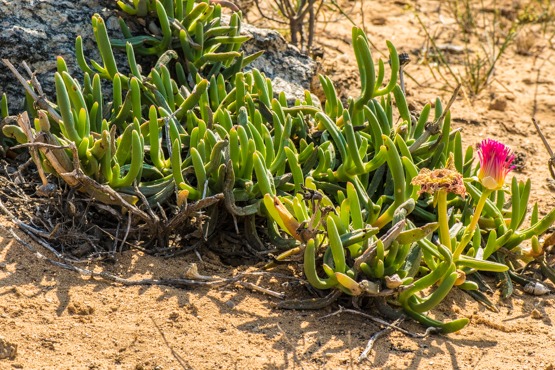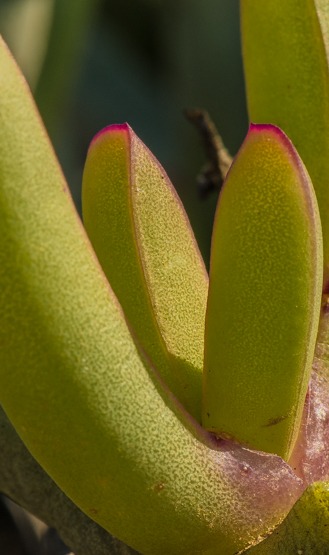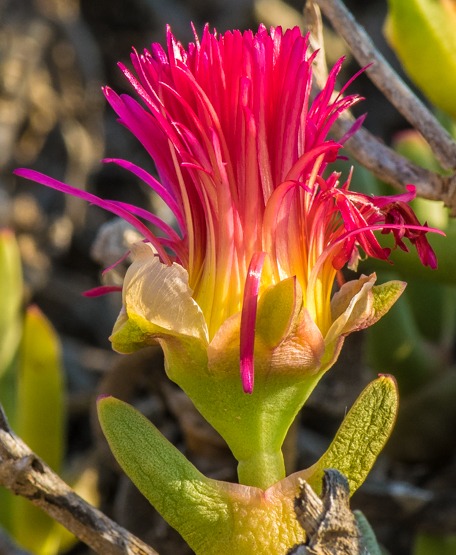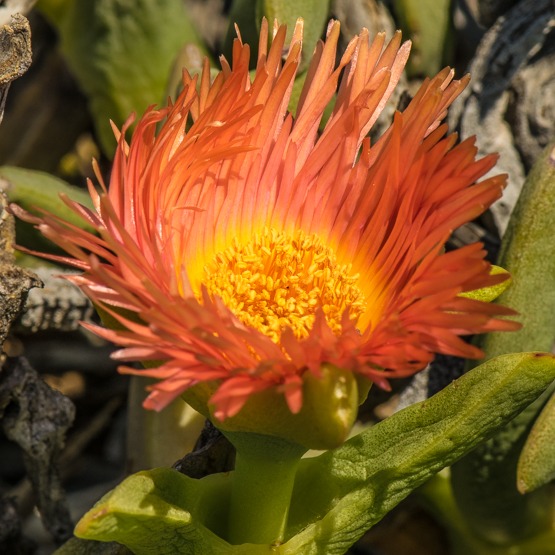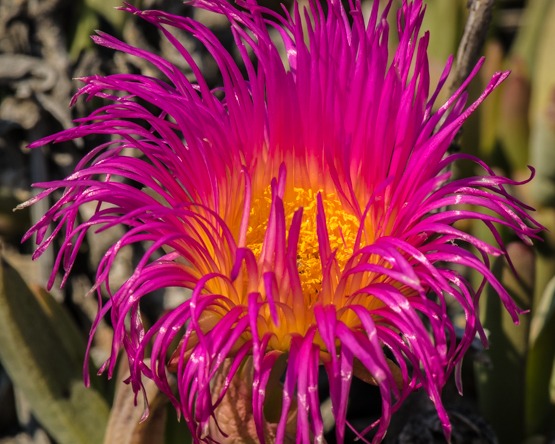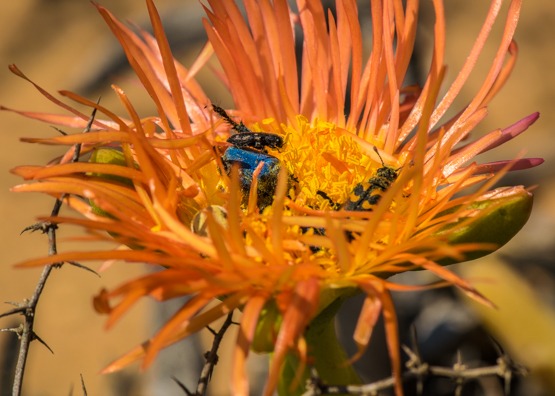In “NAMAQUALAND, a succulent desert” by Cowling and Pierce, this species is described as “perhaps Namaqualand’s showiest vygie” and that is saying a good deal. As it is also easy to grow, it makes a great garden subject in a suitable climate. It is widespread and common in its natural habitat, the sandy soil of Namaqualand’s coastal plain.
The plants are either creeping and rooting from the nodes, or forming a shrub up to 35 cm high, especially when there are other shrubs around to support them.
The branches are up to 1 cm across and the somewhat finger-shaped leaves may be up to 11 cm long.
In August – October, the plants produce spectacular flowers up to 10 cm across, pink to orange to red with a yellow to orange base. They are visited by several species of insects (see last picture) and have unusually high numbers of petals (230-270) and stamens (700-1050). The same goes for the number of compartments in the fruit (18-28).
